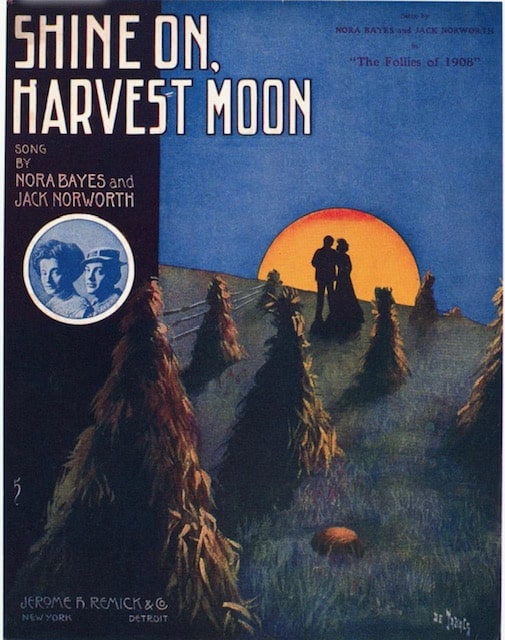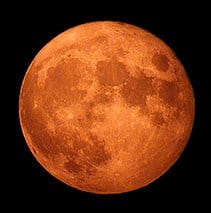September’s full moon arrives fashionably late this month. It will be bright on the evening of September 28th and reach peak illumination at about 6 am on Friday, September 29th.
September’s moon is called the Harvest Full Moon because it arrives closest to the Autumn Equinox. September 23rd is the first day of fall. The word equinox is used to denote the two times per year when the Sun is exactly above the equator (in March and in September). Day and night are essentially equal. On the first day of fall, we can expect a sunrise of 7:17 am and a sunset of 7:24 pm.
The Harvest Full Moon is our fourth consecutive supermoon and the last one this year. It’s about 14,000 miles closer to Earth than usual and will appear slightly larger and brighter than normal.
In the days before electricity, farmers welcomed the extra illumination provided by a Harvest Full Moon. The light was handy for harvesting crops. Winter was coming, and farmers hoped to be done by the first frost!
This change of season is also a good time for reflection. Perhaps you want to start an Autumn Equinox ritual. Take stock of the year so far. What have you done? What lessons have you learned? Stop for a moment and acknowledge your blessings. What are you thankful for?
What else can we see in the September sky? If you’re an early riser, there’s a very bright “star” in the east. It appears several hours before dawn. Why is it just Venus showing off? Venus is the third-brightest object in our sky; only the Sun and Moon shine brighter.
I began to wonder why Venus changed from evenings in July to mornings in September and just how that happened. Well, Venus follows what is called a synodic period or cycle, lasting 584 days.
During each cycle, Venus appears for 263 days as our “morning star” and then goes out of sight. Not to worry, though! After 50 days out of sight (behind the Sun), Venus re-emerges for 263 days, this time as our “evening star” (appearing in the west shortly after sunset).
Then, once more, Venus goes out of sight as it spends eight days in front of the Sun. It re-emerges as our “morning star.” And we start all over again. Venus just began morning showings in early September. I figure we’ll have to wait until next summer for evening appearances!
Finally, I have some interesting trivia about our Harvest Full Moon. Did you know that a famous song was written about it over 100 years ago? A husband-and-wife vaudeville team named Nora Bayes and Jack Norworth wrote the song “Shine On Harvest Moon.” They debuted the song at the Ziegfeld Follies of 1908, and it was an instant sensation. It was one of many moon-related Tin Pan Alley songs of the early 1900s. Tin Pan Alley refers to an area of New York City frequented by music publishers and songwriters.
Dozens of artists have recorded their own renditions of “Shine On Harvest Moon.” Ruth Etting, an actress and singer of the 1920s and 1930s, revived the song in 1931 and did a wonderful version. Later artists who recorded “Shine on Harvest Moon” include Kate Smith (1933), Rosemary Clooney (1960), and Bing Crosby (1961), to name a few. It has stood the test of time and become a pop standard, even into the 21st Century. Not bad for our Harvest Moon!


